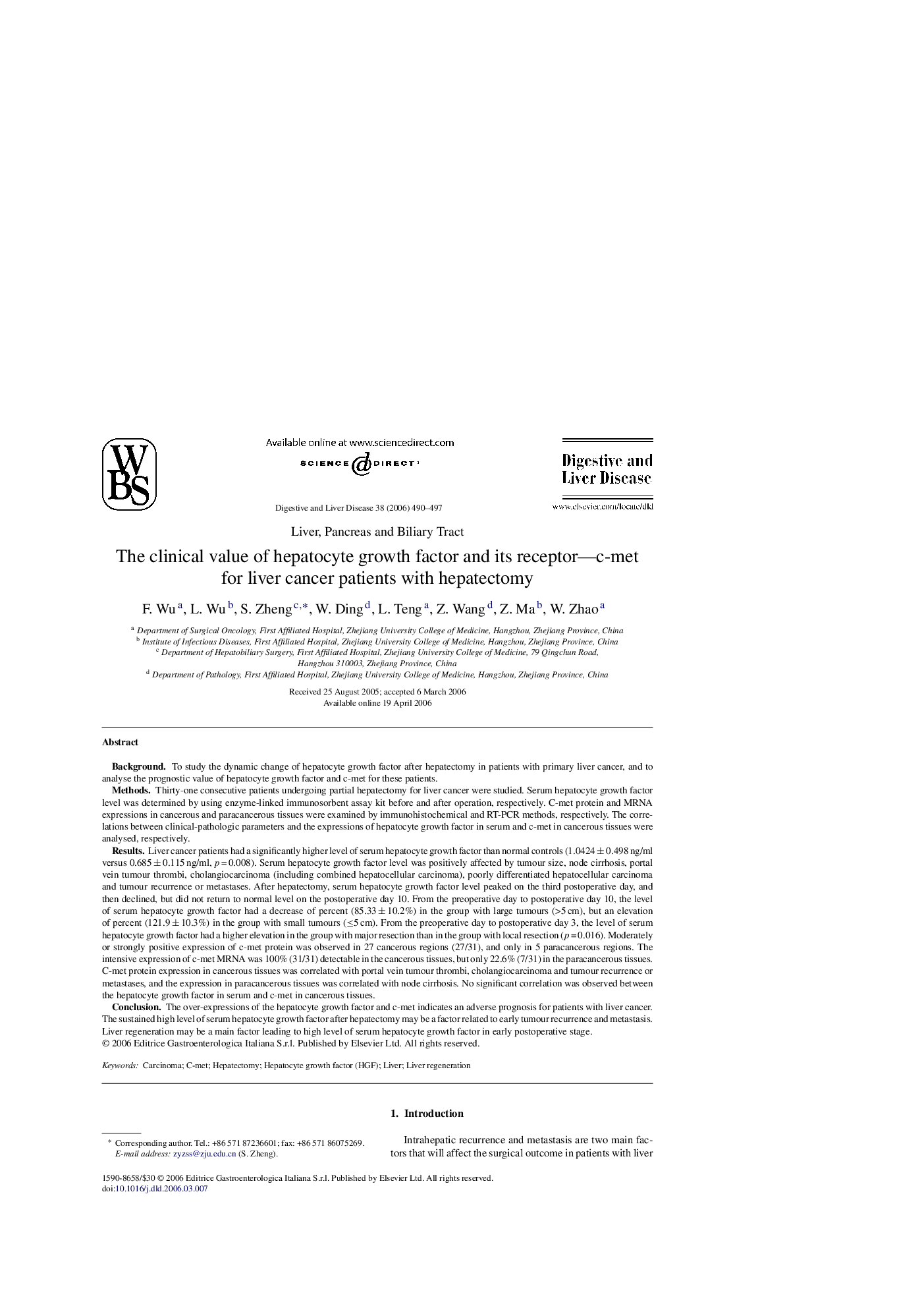| کد مقاله | کد نشریه | سال انتشار | مقاله انگلیسی | نسخه تمام متن |
|---|---|---|---|---|
| 3266724 | 1207865 | 2006 | 8 صفحه PDF | دانلود رایگان |

BackgroundTo study the dynamic change of hepatocyte growth factor after hepatectomy in patients with primary liver cancer, and to analyse the prognostic value of hepatocyte growth factor and c-met for these patients.MethodsThirty-one consecutive patients undergoing partial hepatectomy for liver cancer were studied. Serum hepatocyte growth factor level was determined by using enzyme-linked immunosorbent assay kit before and after operation, respectively. C-met protein and MRNA expressions in cancerous and paracancerous tissues were examined by immunohistochemical and RT-PCR methods, respectively. The correlations between clinical-pathologic parameters and the expressions of hepatocyte growth factor in serum and c-met in cancerous tissues were analysed, respectively.ResultsLiver cancer patients had a significantly higher level of serum hepatocyte growth factor than normal controls (1.0424 ± 0.498 ng/ml versus 0.685 ± 0.115 ng/ml, p = 0.008). Serum hepatocyte growth factor level was positively affected by tumour size, node cirrhosis, portal vein tumour thrombi, cholangiocarcinoma (including combined hepatocellular carcinoma), poorly differentiated hepatocellular carcinoma and tumour recurrence or metastases. After hepatectomy, serum hepatocyte growth factor level peaked on the third postoperative day, and then declined, but did not return to normal level on the postoperative day 10. From the preoperative day to postoperative day 10, the level of serum hepatocyte growth factor had a decrease of percent (85.33 ± 10.2%) in the group with large tumours (>5 cm), but an elevation of percent (121.9 ± 10.3%) in the group with small tumours (≤5 cm). From the preoperative day to postoperative day 3, the level of serum hepatocyte growth factor had a higher elevation in the group with major resection than in the group with local resection (p = 0.016). Moderately or strongly positive expression of c-met protein was observed in 27 cancerous regions (27/31), and only in 5 paracancerous regions. The intensive expression of c-met MRNA was 100% (31/31) detectable in the cancerous tissues, but only 22.6% (7/31) in the paracancerous tissues. C-met protein expression in cancerous tissues was correlated with portal vein tumour thrombi, cholangiocarcinoma and tumour recurrence or metastases, and the expression in paracancerous tissues was correlated with node cirrhosis. No significant correlation was observed between the hepatocyte growth factor in serum and c-met in cancerous tissues.ConclusionThe over-expressions of the hepatocyte growth factor and c-met indicates an adverse prognosis for patients with liver cancer. The sustained high level of serum hepatocyte growth factor after hepatectomy may be a factor related to early tumour recurrence and metastasis. Liver regeneration may be a main factor leading to high level of serum hepatocyte growth factor in early postoperative stage.
Journal: Digestive and Liver Disease - Volume 38, Issue 7, July 2006, Pages 490–497